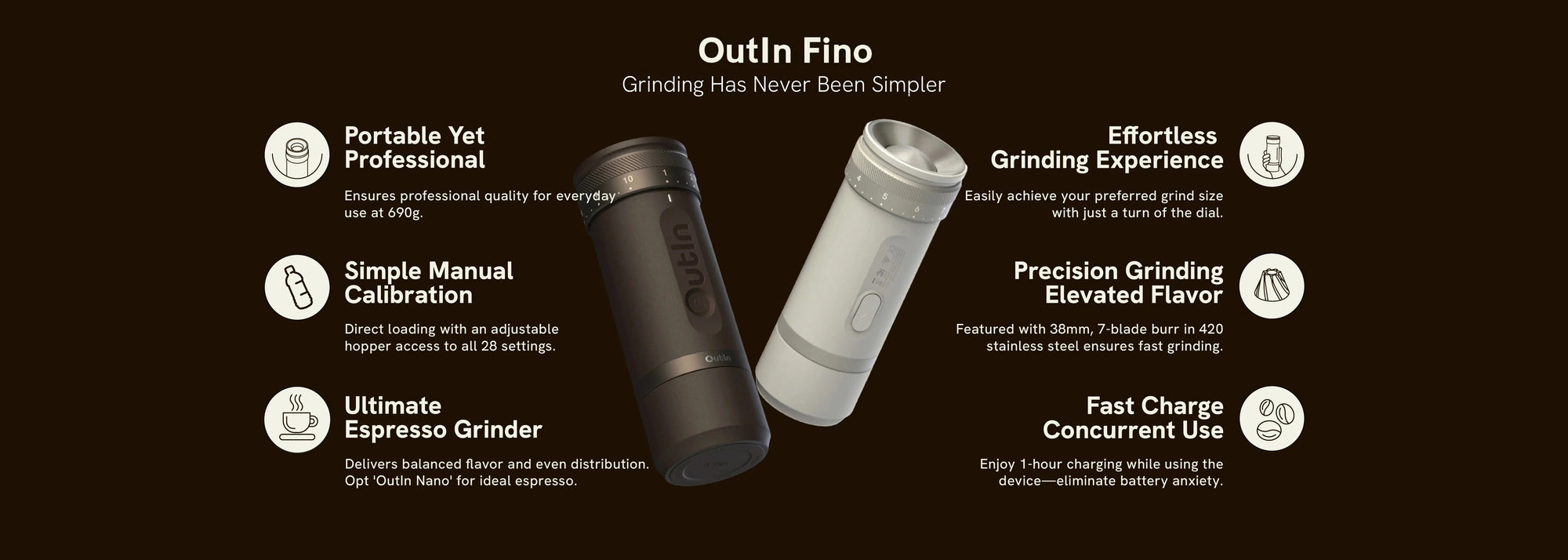Unlock the Secrets to the Perfect Brew: Discover Must-Have Coffee Grinding Essentials!
For coffee enthusiasts, the journey to the perfect brew begins long before the kettle boils. One of the most crucial steps in crafting a delightful cup of coffee is using freshly ground coffee beans. When you grind your beans just before brewing, you unlock an explosion of flavor and aroma that pre-ground coffee simply cannot match. The essential oils and compounds in the beans are preserved until the moment you brew, creating a richer, more vibrant cup. In this article, we aim to guide you through the essential aspects of choosing the right coffee grinding tools and accessories, ensuring that your brewing experience is nothing short of exceptional.

Understanding Coffee Grinding Basics
The process of grinding coffee is foundational to achieving the desired flavor profile in your cup. When you grind coffee beans, you increase the surface area that interacts with water, allowing for optimal extraction of flavor and aroma during brewing. Whole beans retain their freshness longer than pre-ground coffee, which can lose its vibrant qualities over time. Moreover, the grind size plays a pivotal role in determining how your coffee tastes. A coarse grind is suitable for brewing methods like French press, while a fine grind is ideal for espresso. Understanding these basics will set the stage for selecting the right grinder and brewing techniques.
Types of Coffee Grinders
When it comes to grinding coffee beans, there are primarily two types of grinders to consider: blade grinders and burr grinders. Blade grinders use a rotating blade to chop the beans, which can result in uneven particle sizes. While they are often more affordable and compact, they tend to produce a less consistent grind, which could affect your coffee's flavor. On the other hand, burr grinders crush the beans between two revolving surfaces, allowing for a more uniform grind size. Though typically pricier, burr grinders are favored by serious coffee aficionados for their ability to produce consistent results, enhancing the overall brewing experience. Understanding the differences between these two types will help you make an informed decision based on your brewing preferences.
Manual vs. Electric Grinders
When deciding between manual and electric grinders, consider your personal preferences and brewing habits. Manual grinders, often favored by purists, allow for greater control over grind size and often require more effort. They can be a rewarding experience, offering a meditative ritual as part of the brewing process. Meanwhile, electric grinders are convenient and quick, making them ideal for those with busy lifestyles. They typically offer settings for different grind sizes and can handle larger quantities of coffee beans at once. Both options have their merits, so think about how you want to integrate grinding into your coffee routine.
Key Features to Consider When Choosing a Grinder
When selecting a coffee grinder, several key features should be on your checklist. First, consider the grind settings—many grinders offer a range of options, allowing you to customize your grind size for various brewing methods. The capacity of the grinder is also important; if you often brew multiple cups at once, choose a model that can accommodate larger amounts of beans. Ease of cleaning is another factor to keep in mind. Grinders that can be easily disassembled or have removable parts make maintenance a breeze. Lastly, the build quality of the grinder can affect its longevity and performance. Investing in a well-made grinder will pay off in the long run, ensuring that you enjoy the best flavors from your coffee beans.
Accessories for Grinding Coffee Beans
In addition to a good coffee grinder, there are several accessories that can enhance your coffee grinding and brewing experience. A quality storage container is essential for keeping your freshly ground coffee beans airtight, preserving their flavor and aroma. A scale for measuring coffee ensures that you're using the right amount for each brew, leading to more consistent results. Additionally, cleaning tools designed for grinders can help you maintain your equipment, ensuring that old coffee oils and particles don't affect the taste of your brews. These accessories not only improve the grinding process but also elevate your overall coffee experience.
Enhancing Your Coffee Experience
In summary, investing in the right coffee grinder and accessories is vital for anyone serious about their coffee. Freshly ground coffee beans can significantly enhance the flavor and aroma of your brew, leading to a delightful drinking experience. By understanding the various types of grinders, key features to look for, and useful accessories, you can make informed choices that suit your brewing style. Don’t hesitate to explore different grind sizes and methods to discover what works best for your palate. After all, the perfect cup of coffee is just a grind away!


